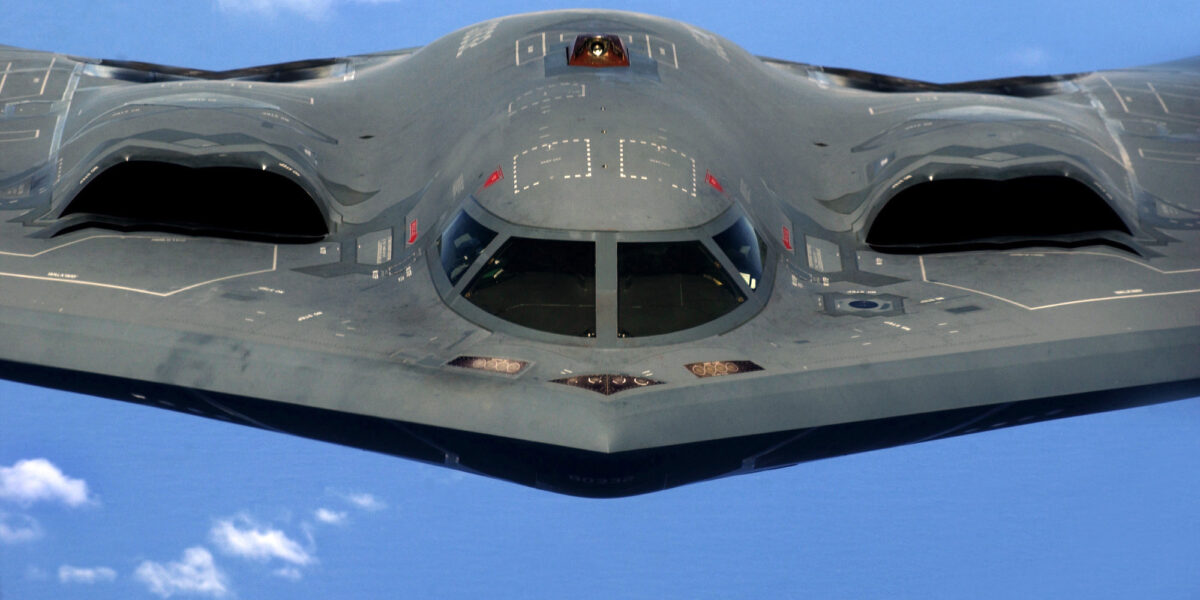The B-2 Spirit’s cockpit represents the pinnacle of stealth bomber technology, integrating advanced avionics with human factors engineering to create one of aviation’s most sophisticated workspaces. Understanding its systems reveals how Northrop Grumman achieved the impossible—a bomber that can penetrate the most advanced air defenses.
Glass Cockpit Architecture
The B-2 features a fully integrated glass cockpit that was revolutionary when the aircraft entered service in 1997. Four primary color multifunction displays provide flight, navigation, weapons, and systems data in customizable formats. This digital architecture replaced hundreds of analog instruments found in older bombers.
Each display can show multiple pages of information, allowing crew members to configure their workspace for different mission phases. The system includes redundancy—if one display fails, its information can be transferred to remaining screens without loss of capability.
Crew Stations
Two crew members operate the B-2 from side-by-side ACES II ejection seats. The mission commander (right seat) handles navigation, weapons, and defensive systems. The aircraft commander (left seat) focuses on flying the aircraft and overall mission decisions. Both stations can access all systems, providing backup capability.
The crew interface emphasizes workload reduction. Highly automated systems handle routine tasks, allowing the crew to focus on tactical decisions. Voice warnings supplement visual displays, and the flight management system can execute complex navigation procedures automatically.
Control Systems
Conventional-appearing control sticks and throttles mask the sophisticated fly-by-wire system beneath. The quadruple-redundant digital flight control system processes all inputs through four independent computers before commanding control surfaces.
This redundancy is essential—the B-2’s flying wing design is inherently unstable without computer augmentation. The system makes continuous corrections faster than any human pilot could, transforming the unstable airframe into a stable, responsive aircraft.
Control surfaces include elevons on the wing trailing edges for pitch and roll, split drag rudders for yaw and deceleration, and a “beaver tail” for additional pitch authority. The flight control computers coordinate all surfaces based on flight conditions and pilot commands.
Navigation Suite
The B-2’s navigation systems combine multiple technologies for accuracy and reliability. Ring laser gyro inertial navigation systems provide autonomous position data without emitting signals. GPS receivers update inertial data when satellite signals are available safely.
The AN/APQ-181 radar provides terrain following and terrain avoidance capabilities for low-level penetration missions. This low-probability-of-intercept radar can map terrain and targets while minimizing detection risk. The system also supports precision weapons delivery.
Weapons Management
The weapons officer manages ordnance through dedicated displays showing bomb bay status, target assignments, and release sequences. The B-2’s two internal weapons bays can carry 40,000 pounds of ordnance—everything from nuclear gravity bombs to precision-guided conventional weapons.
The GPS-Aided Targeting System (GATS) integrates GPS data with radar returns for precision strikes. This system enables delivery of GPS-guided weapons like the Joint Direct Attack Munition (JDAM) in any weather condition. The B-2 can strike multiple targets on a single pass with different weapons.
Defensive Systems
The AN/APR-50 defensive management system provides threat warning and situational awareness. Antennas distributed around the airframe detect radar emissions and classify threats, displaying information graphically so the crew can assess risk and adjust tactics.
Rather than active jamming that would reveal its presence, the B-2 relies primarily on its stealth characteristics for protection. The cockpit systems help the crew avoid detection by routing around known threats and monitoring for unexpected radar activity.
Communications Integration
Secure communications systems link the B-2 to command authorities worldwide. Satellite communication terminals provide connectivity for mission updates, target changes, and status reports. The aircraft can receive modified targeting data mid-flight and adjust its weapons accordingly.
Low-probability-of-intercept communications reduce the risk of revealing the aircraft’s position. Link 16 tactical data links provide interoperability with other military assets when mission requirements permit.
Continuous Modernization
The B-2 fleet receives ongoing upgrades to maintain combat relevance. Recent programs have improved radar capabilities, updated computer processors, and integrated new weapons. The cockpit systems architecture allows software updates without major hardware changes.
These upgrades ensure the B-2 remains effective until the B-21 Raider achieves full operational capability. The lessons learned from B-2 cockpit design have directly influenced the newer bomber’s crew interface.




Subscribe for Updates
Get the latest articles delivered to your inbox.
We respect your privacy. Unsubscribe anytime.